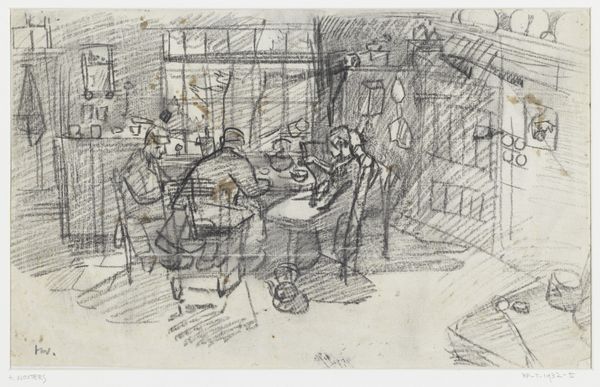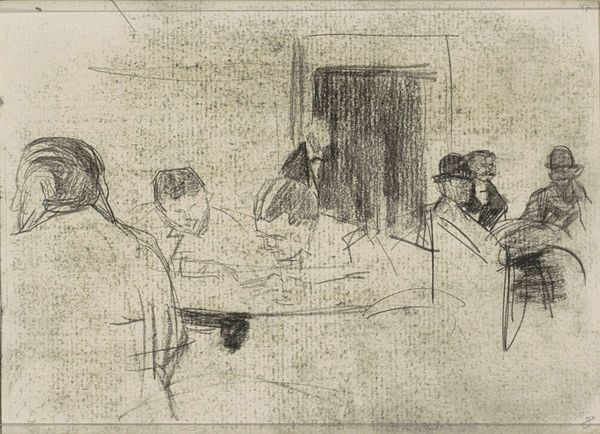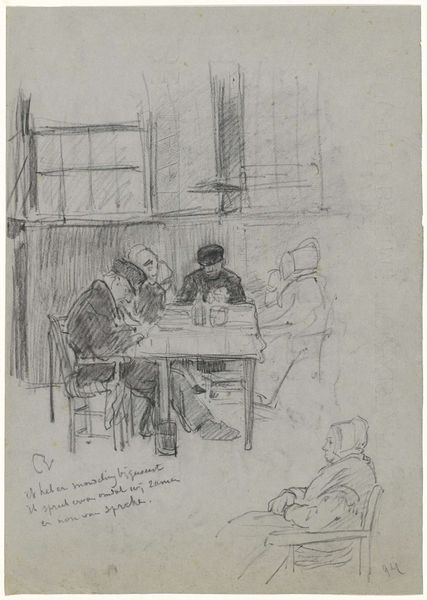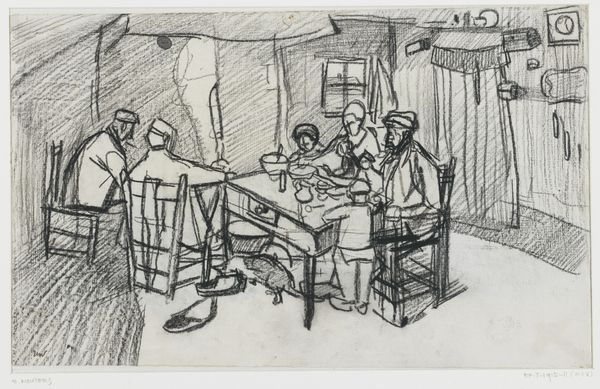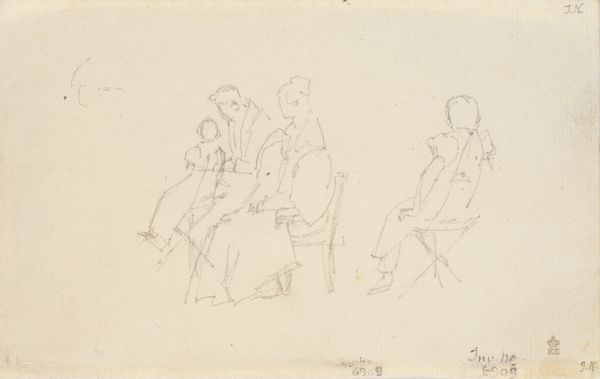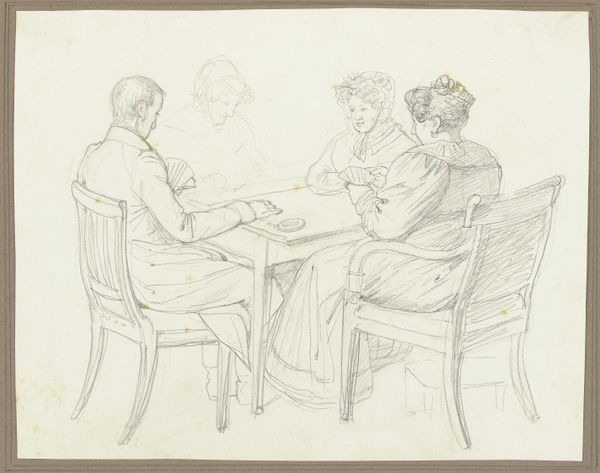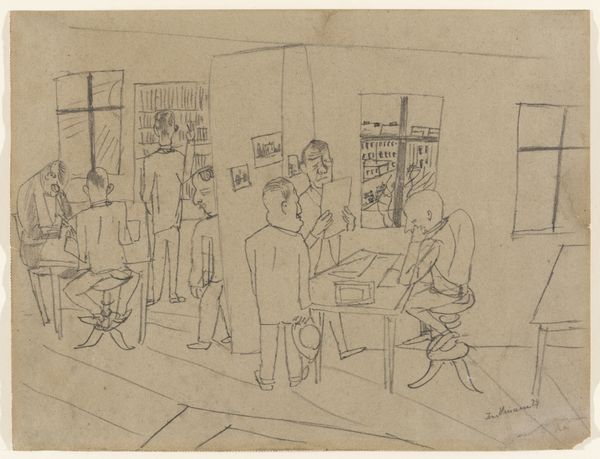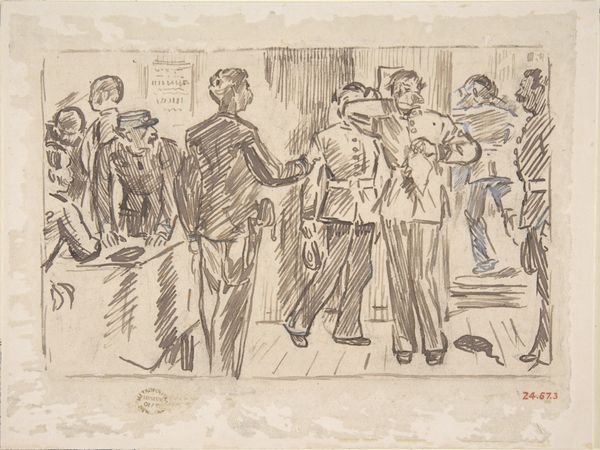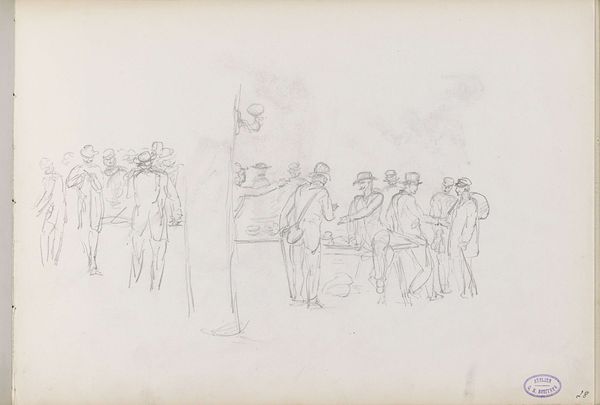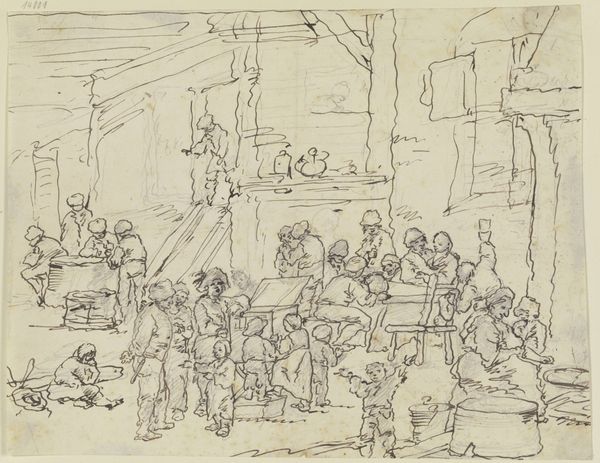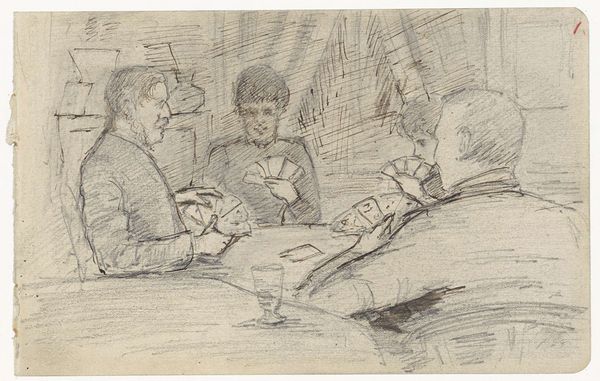
drawing, graphite
#
drawing
#
group-portraits
#
graphite
#
genre-painting
#
modernism
#
realism
Dimensions: height 216 mm, width 277 mm
Copyright: Rijks Museum: Open Domain
Curator: Editor: We're looking at "Kaartspelende mannen in een bar" (Card-Playing Men in a Bar) by Henk Henriët, around 1930. It’s a graphite drawing. It feels…unposed, like a quick sketch capturing a mundane moment. What strikes you about it? Curator: As a materialist, I'm drawn to the means of production here. Graphite is a readily available material; the drawing medium suggests accessibility and perhaps the artist’s interest in documenting everyday life rather than creating a highly polished artwork. Where did Henriët find his materials? Editor: That’s a good point. Graphite is pretty common, but the paper seems intentional - maybe it was all he had available? It adds to the sense of immediacy. How does this influence our understanding? Curator: Precisely. It makes us consider the social context. Was Henriët part of the working class, observing his peers? Was drawing a mode of labor? The depiction of the bar, the clothing of the men, and the card game all point to a specific social class and leisure activity. Is he representing or simply showing? Editor: I hadn't thought of it that way. The material, the graphite, wasn't just a neutral choice then; it was tied to Henriët's world and what he wanted to represent. Curator: And consumption! These men aren't just existing in this space. The liquor and games signify their time. Also consider this: drawing could be reproduced, copied and spread more easily. He probably would want his message spread through prints of this drawing, democratising his statement and allowing him to communicate his social observations more broadly. Editor: So it’s a commentary. Interesting. Curator: Exactly. By focusing on the materials and context, we start to dismantle the traditional hierarchy of art. Is it simply "drawing" or cultural commentary, as he explores both labor and class at the time? What does that matter today? Editor: I'll definitely look at art with a more critical eye. The materiality speaks of production. I have many thoughts. Curator: Agreed!
Comments
No comments
Be the first to comment and join the conversation on the ultimate creative platform.
